每当学习一种编程语言,总是从HelloWord开始,TensorFlow的HelloWord就是经典的MNIST项目。
###项目准备
- 下载训练数据和测试数据
THE MNIST DATABASE of handwritten digits 这个官网上面给出了训练数据和测试数据集,请分别把下面的四个文件下载到本地。
train-images-idx3-ubyte.gz: training set images (9912422 bytes)
train-labels-idx1-ubyte.gz: training set labels (28881 bytes)
t10k-images-idx3-ubyte.gz: test set images (1648877 bytes)
t10k-labels-idx1-ubyte.gz: test set labels (4542 bytes)
- 下载GitHub源代码
tensorflow/mnist 下载源代码,并直接用Pycharm打开该项目
###调试项目
项目本身包含自动下载训练数据和测试数据,但是可能因为网络原因有可能导致无法加载,所以为了方便起见,我们直接使用上面已经下载好的本地数据即可。
- 配置训练数据和测试数据
将上面下载的文件放入下图所示的目录中
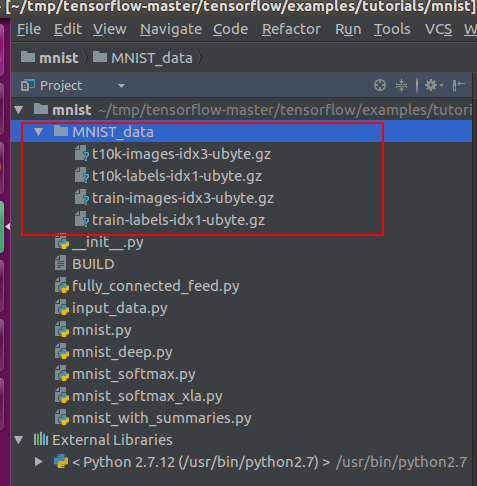
修改如下所示python文件
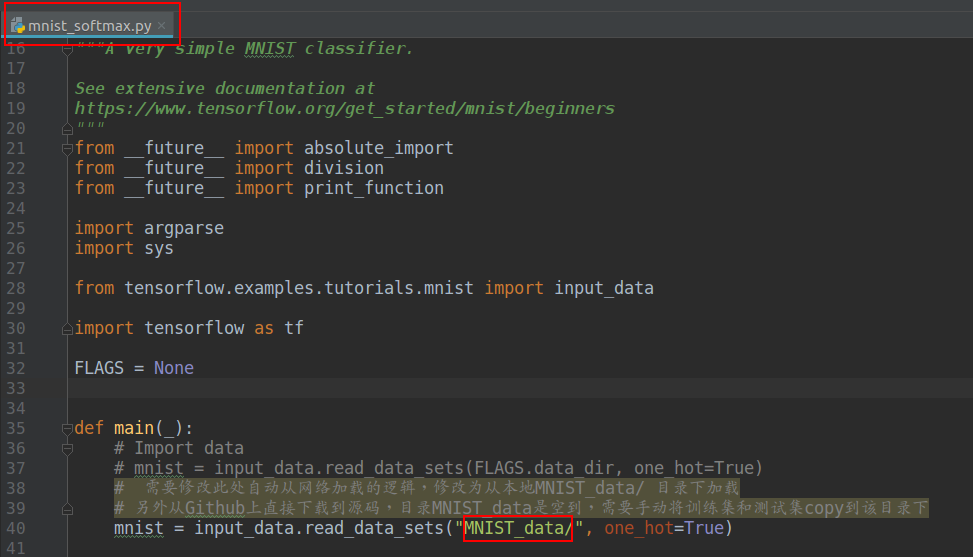
- 选择softmax回归,运行即可
###运行结果
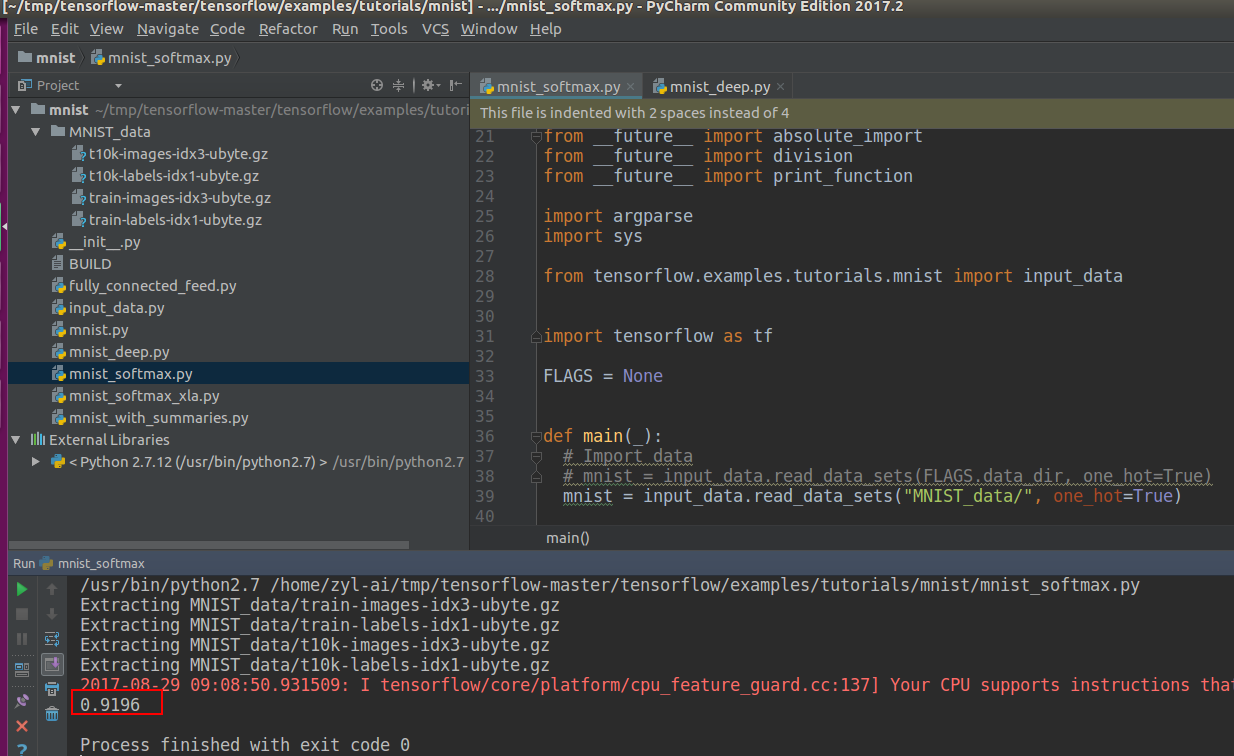
###deep-learning的训练对比
我们可以选择深度学习,来对比一下训练出来的可信度。
修改mnist-deep.py文件,将载入数据部分修改为上图的本地加载。为了节省时间,我们将迭代训练次数由原先的2w次降低为2k次(实际工作中切不可这么粗鲁),学习率还是100,然后运行mnist-deep.py。
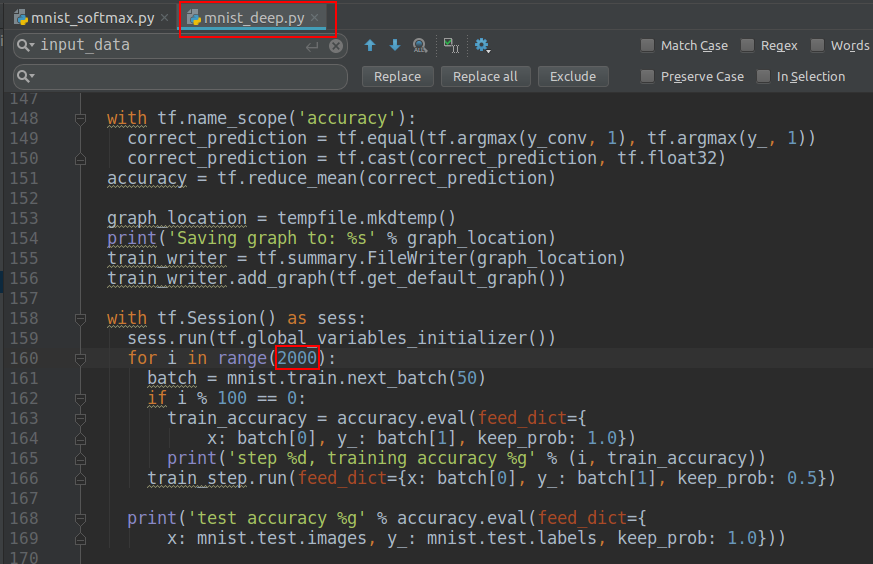
一段时间以后,观察一下运行结果。
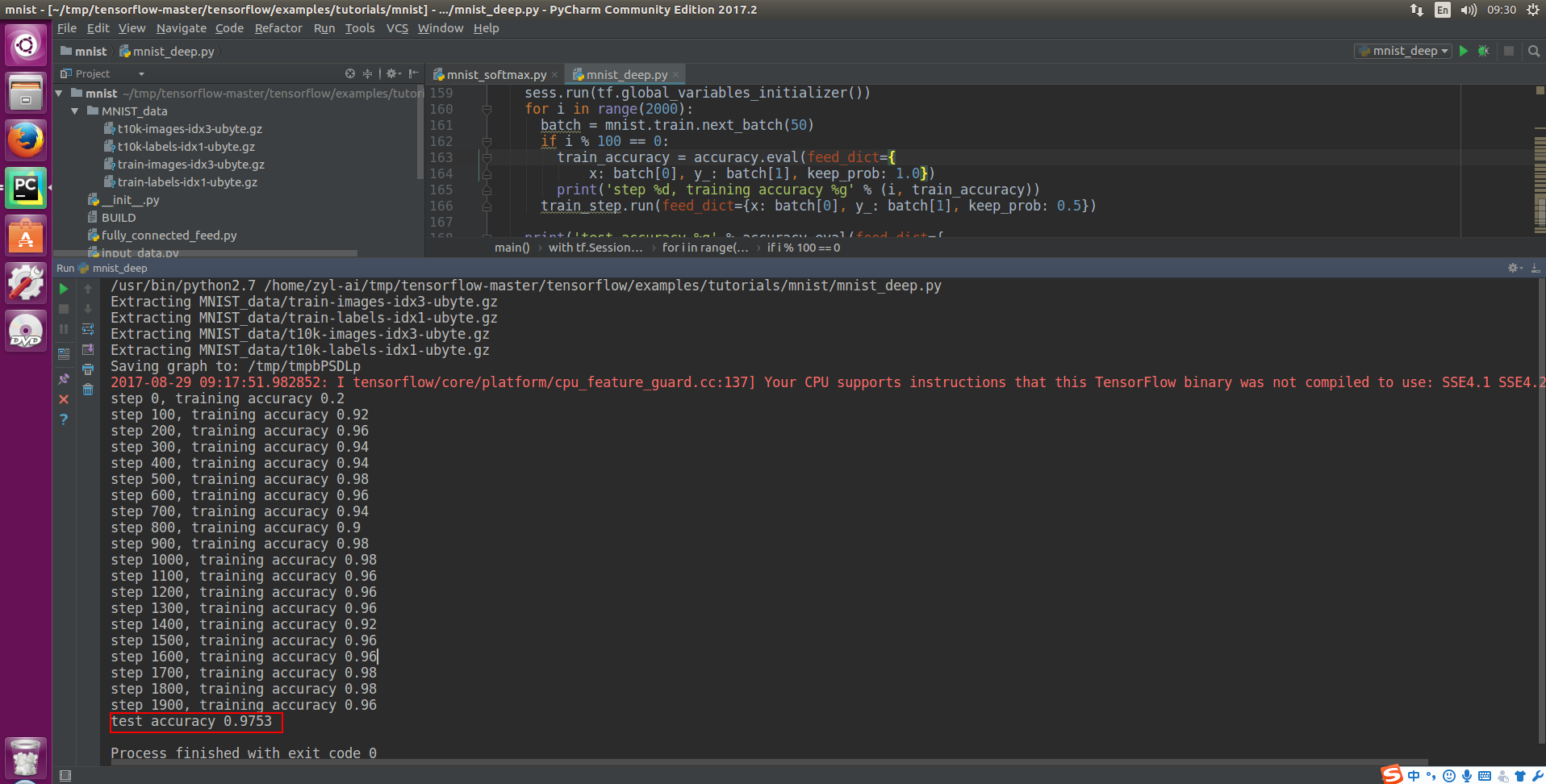
对比softmax回归的0.91,现在的0.97效果要好很多。
###附softmax源码
"""A very simple MNIST classifier.
See extensive documentation at
https://www.tensorflow.org/get_started/mnist/beginners
"""
from __future__ import absolute_import
from __future__ import division
from __future__ import print_function
import argparse
import sys
from tensorflow.examples.tutorials.mnist import input_data
import tensorflow as tf
FLAGS = None
def main(_):
# Import data
# mnist = input_data.read_data_sets(FLAGS.data_dir, one_hot=True)
mnist = input_data.read_data_sets("MNIST_data/", one_hot=True)
# Create the model
x = tf.placeholder(tf.float32, [None, 784])
W = tf.Variable(tf.zeros([784, 10]))
b = tf.Variable(tf.zeros([10]))
y = tf.matmul(x, W) + b
# Define loss and optimizer
y_ = tf.placeholder(tf.float32, [None, 10])
# The raw formulation of cross-entropy,
#
# tf.reduce_mean(-tf.reduce_sum(y_ * tf.log(tf.nn.softmax(y)),
# reduction_indices=[1]))
#
# can be numerically unstable.
#
# So here we use tf.nn.softmax_cross_entropy_with_logits on the raw
# outputs of 'y', and then average across the batch.
cross_entropy = tf.reduce_mean(
tf.nn.softmax_cross_entropy_with_logits(labels=y_, logits=y))
train_step = tf.train.GradientDescentOptimizer(0.5).minimize(cross_entropy)
sess = tf.InteractiveSession()
tf.global_variables_initializer().run()
# Train
for _ in range(1000):
batch_xs, batch_ys = mnist.train.next_batch(100)
sess.run(train_step, feed_dict={x: batch_xs, y_: batch_ys})
# Test trained model
correct_prediction = tf.equal(tf.argmax(y, 1), tf.argmax(y_, 1))
accuracy = tf.reduce_mean(tf.cast(correct_prediction, tf.float32))
print(sess.run(accuracy, feed_dict={x: mnist.test.images,
y_: mnist.test.labels}))
if __name__ == '__main__':
parser = argparse.ArgumentParser()
parser.add_argument('--data_dir', type=str, default='/tmp/tensorflow/mnist/input_data',
help='Directory for storing input data')
FLAGS, unparsed = parser.parse_known_args()
tf.app.run(main=main, argv=[sys.argv[0]] + unparsed)






















 407
407











 被折叠的 条评论
为什么被折叠?
被折叠的 条评论
为什么被折叠?








